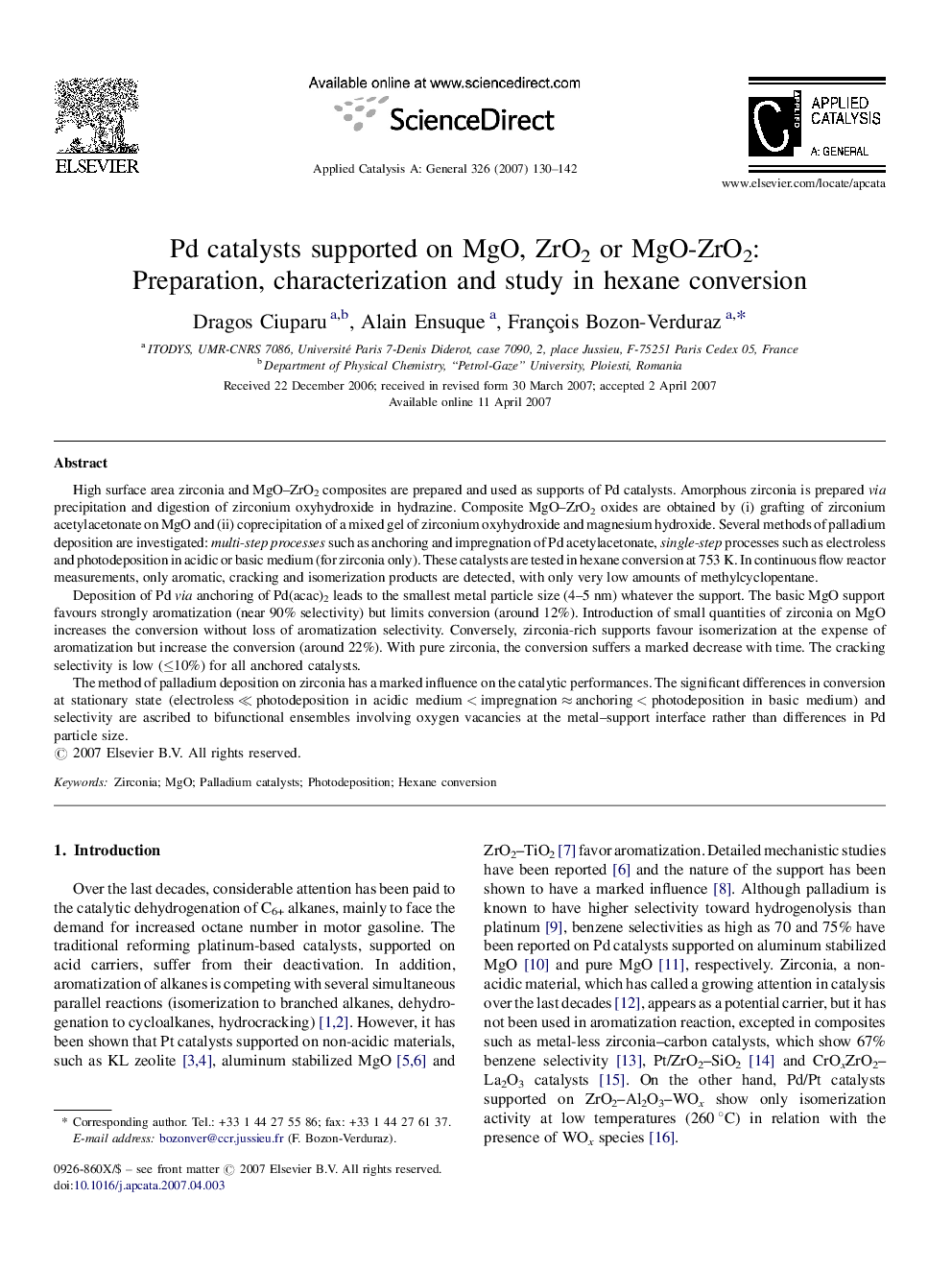| کد مقاله | کد نشریه | سال انتشار | مقاله انگلیسی | نسخه تمام متن |
|---|---|---|---|---|
| 43522 | 45975 | 2007 | 13 صفحه PDF | دانلود رایگان |

High surface area zirconia and MgO–ZrO2 composites are prepared and used as supports of Pd catalysts. Amorphous zirconia is prepared via precipitation and digestion of zirconium oxyhydroxide in hydrazine. Composite MgO–ZrO2 oxides are obtained by (i) grafting of zirconium acetylacetonate on MgO and (ii) coprecipitation of a mixed gel of zirconium oxyhydroxide and magnesium hydroxide. Several methods of palladium deposition are investigated: multi-step processes such as anchoring and impregnation of Pd acetylacetonate, single-step processes such as electroless and photodeposition in acidic or basic medium (for zirconia only). These catalysts are tested in hexane conversion at 753 K. In continuous flow reactor measurements, only aromatic, cracking and isomerization products are detected, with only very low amounts of methylcyclopentane.Deposition of Pd via anchoring of Pd(acac)2 leads to the smallest metal particle size (4–5 nm) whatever the support. The basic MgO support favours strongly aromatization (near 90% selectivity) but limits conversion (around 12%). Introduction of small quantities of zirconia on MgO increases the conversion without loss of aromatization selectivity. Conversely, zirconia-rich supports favour isomerization at the expense of aromatization but increase the conversion (around 22%). With pure zirconia, the conversion suffers a marked decrease with time. The cracking selectivity is low (≤10%) for all anchored catalysts.The method of palladium deposition on zirconia has a marked influence on the catalytic performances. The significant differences in conversion at stationary state (electroless ≪ photodeposition in acidic medium < impregnation ≈ anchoring < photodeposition in basic medium) and selectivity are ascribed to bifunctional ensembles involving oxygen vacancies at the metal–support interface rather than differences in Pd particle size.
MgO-rich supports favour high selectivities in aromatization whereas zirconia-rich supports favour isomerization, especially when Pd is photodeposed in basic medium. A new bifunctionality of zirconia supported catalysts, involving the role of point defects (oxygen vacancies, Zr3+ ions) is proposed. Figure optionsDownload as PowerPoint slide
Journal: Applied Catalysis A: General - Volume 326, Issue 2, 15 July 2007, Pages 130–142